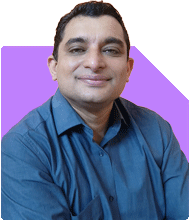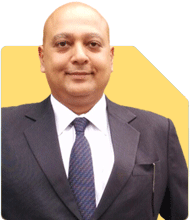I am 45 years my name is U K Singh
I have MF of 2000000 and SIP of 6500/ Month
PPF Value 1500000
NPS Value 500000 by monthly contribution of 5K
FD of 2000000
NSC of 1000000
My wife is also 45 years
Her MF Value is of 500000
PPF Value 2100000
NPS Value 500000 by monthly contribution of 5K
FD of 500000
3 Plots of 1 Cr
My current monthly expenses are 30K.
For my son’s medical education from 2029 to 2034 I will need money and for our retirement phase we will need money.
Please suggest what we have to do
Ans: Your current investments are well-diversified across various instruments. These include mutual funds (MF), Public Provident Fund (PPF), National Pension System (NPS), Fixed Deposits (FD), and National Savings Certificates (NSC). Additionally, you have significant investments in real estate through plots.
You and your wife both have substantial PPF and NPS investments, which is a good strategy for long-term savings and tax benefits. Your monthly expenses are Rs. 30,000, and you will need funds for your son's medical education from 2029 to 2034 and for your retirement.
Your diversified portfolio shows a good understanding of risk management. The regular contributions to NPS and PPF are commendable as they offer long-term benefits. Your investment discipline is evident from your systematic investment plans (SIPs) and regular savings.
Understanding Your Goals
Let's break down your financial goals into two primary categories:
Funding Your Son's Medical Education (2029-2034)
Retirement Planning
Funding Your Son's Medical Education
Your son's education is a short to medium-term goal. To meet this goal, you need to ensure liquidity and safety of principal.
Recommendations:
Continue Your SIPs: Keep your SIPs in mutual funds going. These will help accumulate a significant corpus over time.
Allocate a Separate Fund for Education: Consider creating a separate investment portfolio for your son's education. You could increase your SIP amount or start a new SIP specifically for this goal.
Invest in Debt Funds: Given the shorter time frame, consider debt mutual funds. They offer better returns than FDs and are more tax-efficient.
Recurring Deposits (RDs): RDs can also be considered for medium-term goals. They are safe and offer guaranteed returns.
Partial Withdrawal from PPF: Since your PPF accounts have substantial balances, you can consider partial withdrawals when required. PPF allows withdrawals after the 7th year.
Retirement Planning
Retirement planning is a long-term goal, and you need to ensure a steady income post-retirement.
Recommendations:
Increase SIP Contributions: If possible, increase your SIP contributions. Equity mutual funds are suitable for long-term goals due to their potential for higher returns.
Balanced Funds: Consider balanced or hybrid funds. These invest in both equity and debt instruments, providing a balance of growth and safety.
Review NPS Contributions: Your NPS contributions are excellent for retirement planning. Ensure that you and your wife continue contributing Rs. 5,000 monthly.
Systematic Withdrawal Plan (SWP): Post-retirement, use SWP from your mutual funds for regular income. SWPs provide a steady income stream and are tax-efficient.
Health Insurance: Ensure you have adequate health insurance. Medical emergencies can significantly impact your savings.
Evaluation of Current Investments
Mutual Funds (MF):
Your MF investments are Rs. 2,000,000 and Rs. 500,000 respectively. Continue these investments and consider increasing your SIPs if possible.
PPF:
Your PPF values are Rs. 1,500,000 and Rs. 2,100,000. PPF is an excellent long-term investment. Avoid withdrawing unless necessary.
NPS:
Both you and your wife have Rs. 500,000 in NPS with monthly contributions of Rs. 5,000. This is a good strategy for retirement savings.
FDs and NSCs:
FDs (Rs. 2,000,000 and Rs. 500,000) and NSCs (Rs. 1,000,000) are safe but offer lower returns. Consider shifting a portion to higher-yielding instruments like debt mutual funds or balanced funds.
Real Estate:
Your three plots valued at Rs. 1 crore are a significant investment. Real estate is illiquid, so avoid relying on it for immediate needs.
We understand the importance of securing your son's future and ensuring a comfortable retirement. Your careful planning and disciplined approach are commendable. Balancing current expenses, future education costs, and retirement savings can be challenging. However, with a structured approach, you can achieve your goals.
Adjusting Your Portfolio
Increase Equity Exposure:
For long-term goals like retirement, increasing equity exposure is advisable. Equity has the potential for higher returns, which can significantly enhance your retirement corpus.
Debt Allocation:
For your son's education, focus more on debt instruments to ensure safety and liquidity. Debt mutual funds, RDs, and PPF withdrawals can be effective.
Emergency Fund:
Maintain an emergency fund equal to 6-12 months of your monthly expenses. This fund should be in liquid instruments like savings accounts or liquid mutual funds.
Regular Review and Rebalancing
It's crucial to regularly review your portfolio and make necessary adjustments. Market conditions, interest rates, and personal circumstances change over time. Regular reviews ensure that your investments remain aligned with your goals.
Rebalancing Strategy:
Review your asset allocation annually. If equity markets perform well, your equity allocation may exceed your target. In such cases, consider shifting some funds to debt instruments.
Avoiding Common Pitfalls
Avoid Over-Reliance on Fixed Deposits:
While FDs are safe, their returns are often lower than inflation. Over-reliance on FDs can erode your purchasing power over time.
Diversify Within Mutual Funds:
Don't concentrate all your mutual fund investments in one category. Diversify across large-cap, mid-cap, and multi-cap funds.
Avoid High-Cost Insurance Products:
Avoid insurance products with high premiums and low returns. Focus on pure term insurance for adequate coverage and invest the rest in mutual funds.
Tax Planning
Effective tax planning can enhance your returns. Utilize all available tax-saving instruments.
PPF and NPS:
Both PPF and NPS provide tax benefits under Section 80C and Section 80CCD respectively. Maximize these contributions for tax savings.
Mutual Funds:
Equity mutual funds held for more than one year qualify for long-term capital gains tax at 10% for gains exceeding Rs. 1 lakh.
Health Insurance:
Premiums paid for health insurance qualify for deductions under Section 80D.
Final Insights
Your disciplined approach to savings and investments is praiseworthy. By fine-tuning your portfolio and aligning it with your goals, you can ensure financial security for your family. Focus on increasing your equity exposure for long-term goals and maintaining liquidity for short-term needs. Regular reviews and rebalancing will keep your investments on track.
Planning for your son's education and your retirement simultaneously is challenging but achievable with a structured plan. Continue your disciplined investment approach, and you will be well-prepared for both.
Best Regards,
K. Ramalingam, MBA, CFP,
Chief Financial Planner,
www.holisticinvestment.in

























